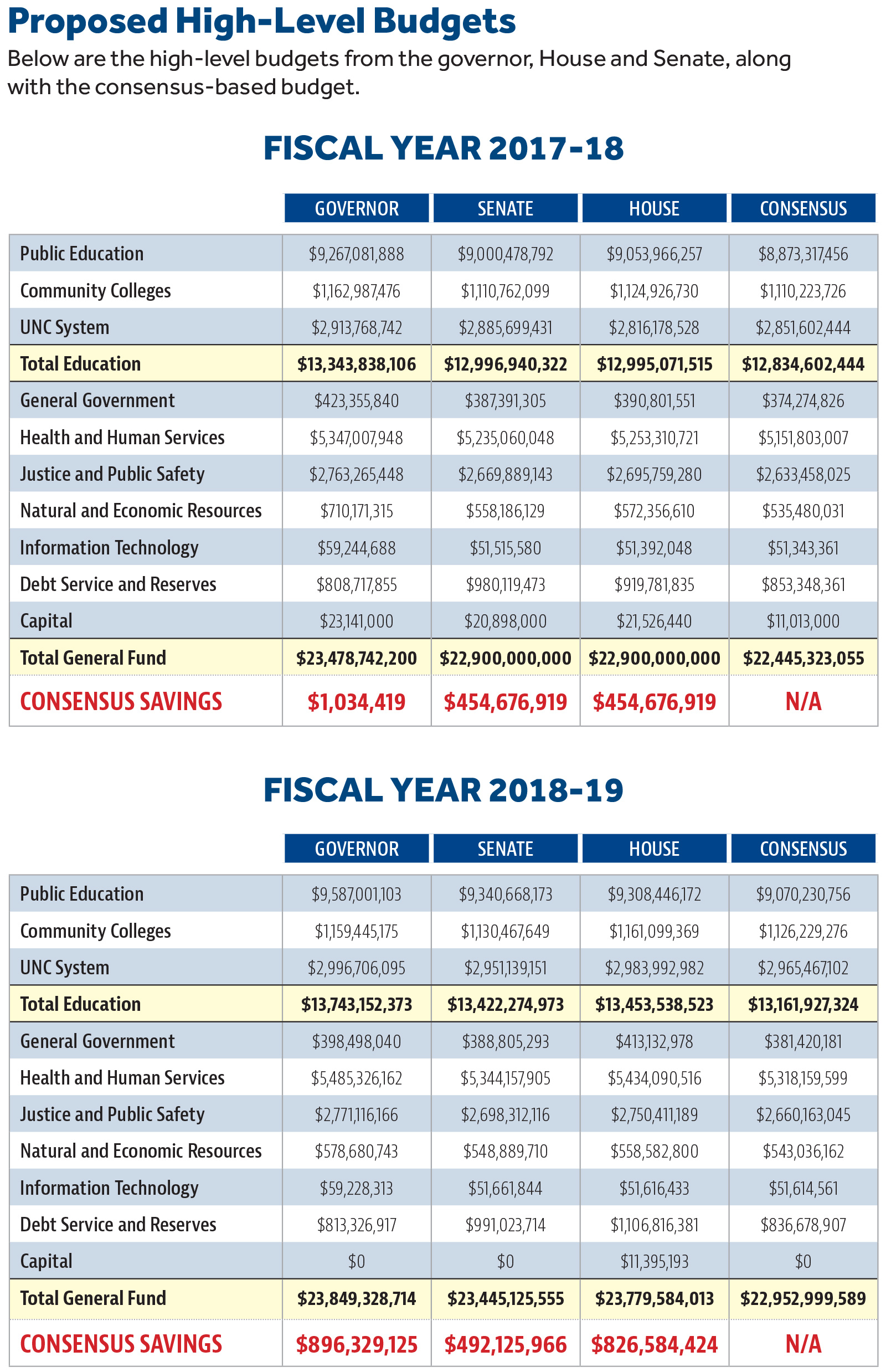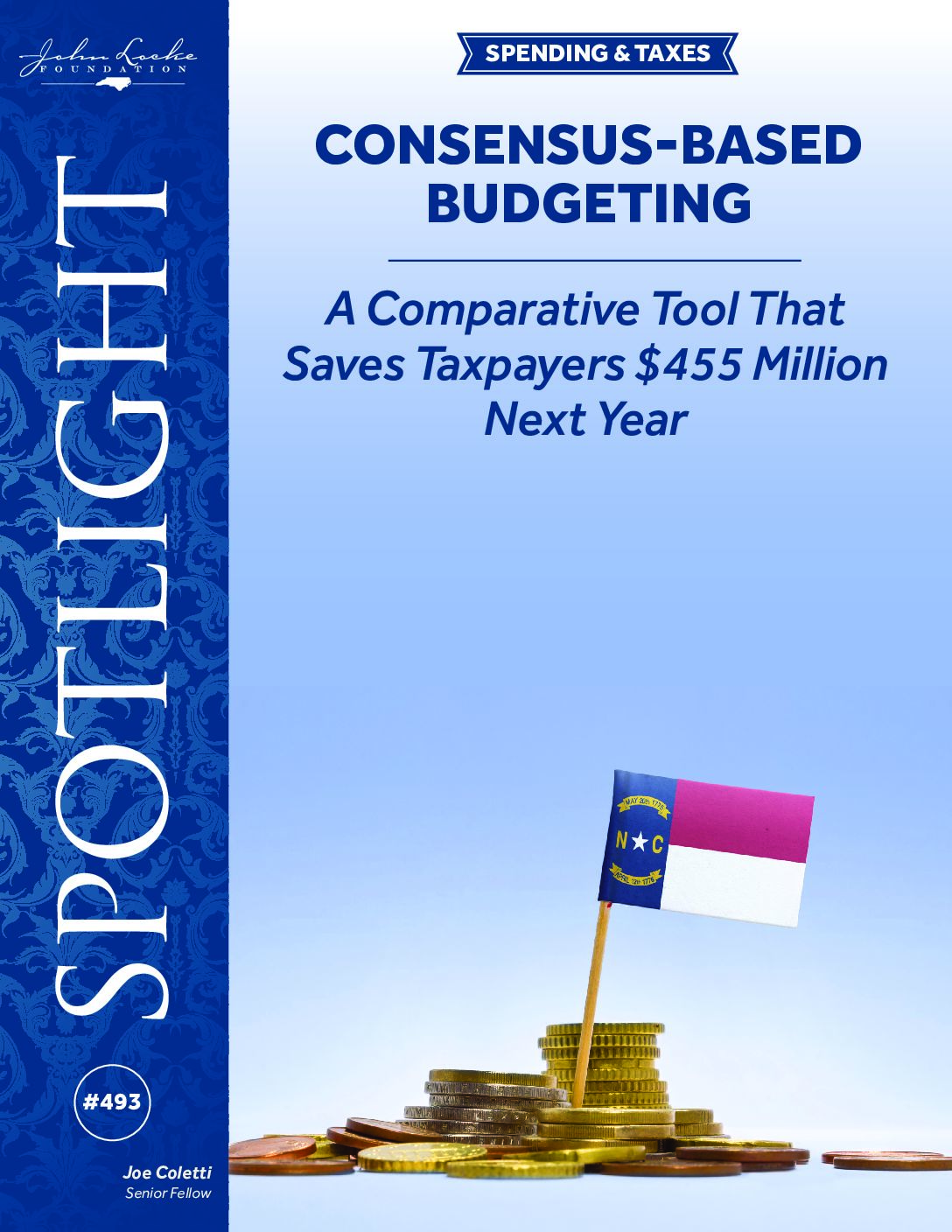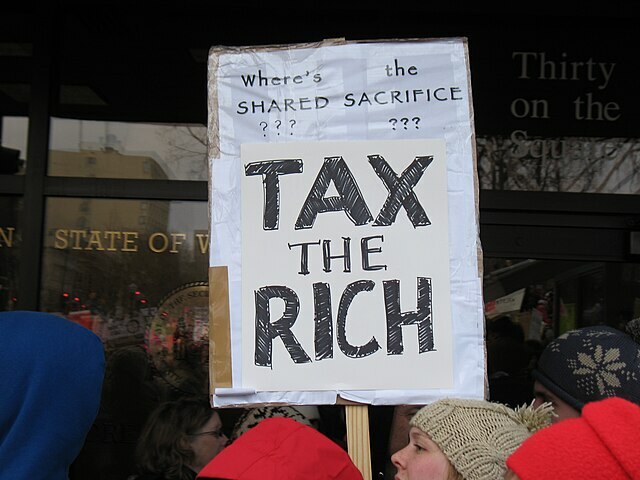How consensus-based budgeting works
Most people are familiar with the concept of logrolling: accepting someone else’s proposal to get their acceptance of yours. In government, it often means more programs and more spending to get a budget passed. What if it worked in reverse?
What if a legislator agreed to give up a pet project in exchange for another legislator doing the same? It almost seems impossible, but this paper shows how the concept could create the smallest budget possible based on budget plans passed by the North Carolina Senate and House.
The concept is simple. If both chambers cannot agree on priorities, reducing spending is the priority. When the two plans disagree, take the option that appropriates less recurring money over the biennium, or less total money if both budgets include only nonrecurring appropriations. If there is no difference in spending, but one plan makes a policy change or creates a new program, the status quo prevails
A useful comparative tool
Note that in this comparison, inclusion (such as grants for film production) or exclusion (such as funding for “Raise the Age”) in the consensus-based budget does not indicate a policy recommendation from the author or the John Locke Foundation. In addition, it focuses only on appropriations, not allocation of unreserved fund balances to the Savings Reserve Account or the Repair and Renovation Reserve.
Saving taxpayers $455 million
By utilizing this tool, overall spending would total $22.4 billion, just 0.2 percent higher than in the fiscal year that ends June 30, 2017, and $455 million less than both the Senate and House proposed. At the end of the second year of the biennium, total spending would be $23.0 billion, $492 million less than the Senate and $827 million less than the House.
Teacher pay would increase an average of 3.3 percent, equal to the House’s proposal, and other state employees would receive the greater of $750 or 1.5 percent of salary, based on the Senate’s proposal. Retirees would not receive the one-time cost-of-living bonus proposed by the House, drawing on the Senate plan again.
Updates to the core accounting systems for public schools, the UNC System, and all state government would continue to move forward with $31.7 million in the first year and $37.9 million in the second year of the biennium.
Next steps
Senate and House leadership recently appointed members to the committee that will negotiate a final budget compromise. We would encourage them to adopt the consensus-based method employed here. For the casual observer of the state budget process, consensus-based budgeting is a way to assess commonalities and differences in the Senate and House budget proposals. In this way, both “insiders” and “outsiders” will benefit from this analysis.




